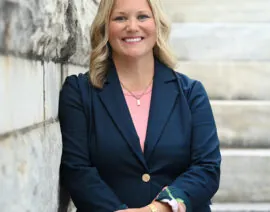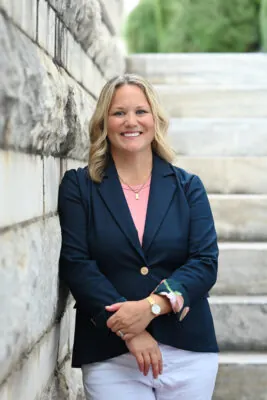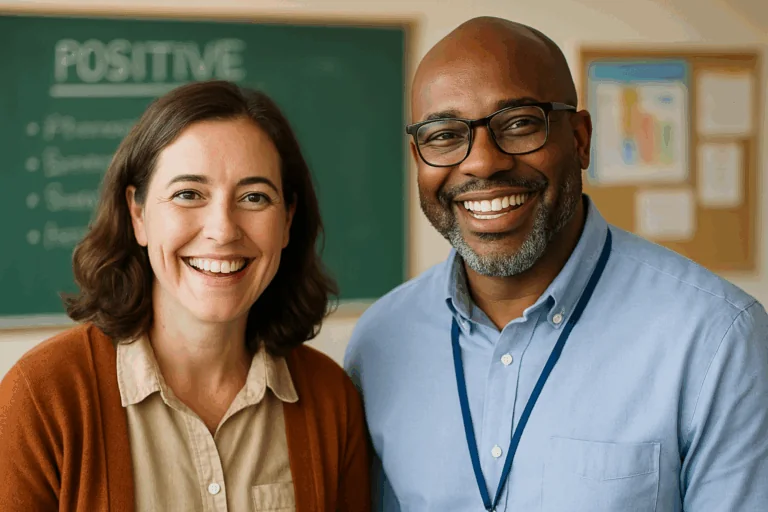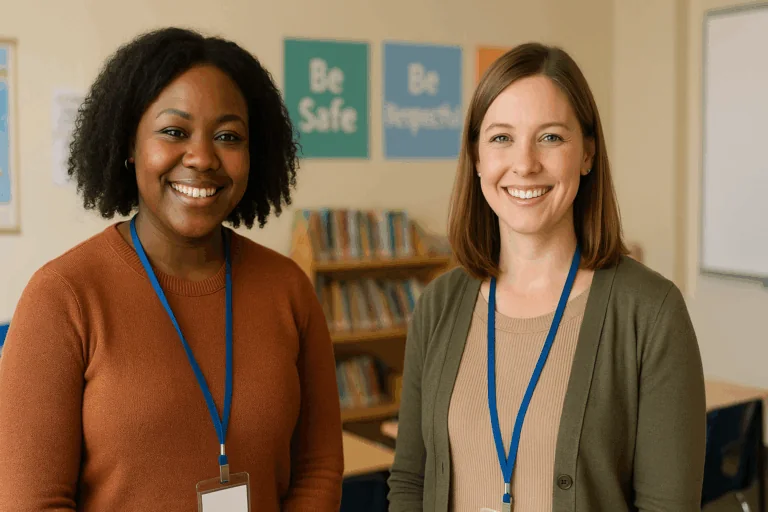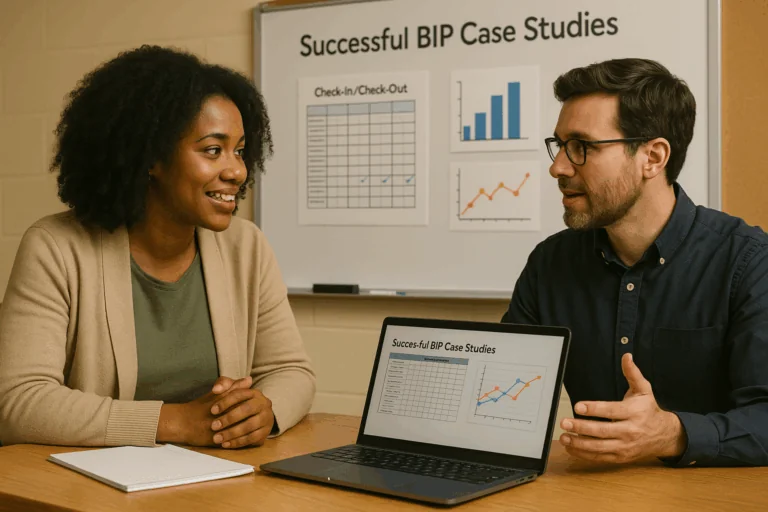Strong MTSS-B practices don’t begin with professional development. They begin with belief.
Before professional development can be effective, schools must establish a deep, shared commitment to supporting all learners. Without this system-wide foundation, professional development becomes just another checklist item — not a catalyst for real change.
When district and building leaders champion the belief that supporting all students is non-negotiable — and back it up by building a strong MTSS-B framework and a clear professional development plan — that’s when real change takes root. It’s not enough to hope the system will grow on its own; leadership must set the vision, structure the supports, and intentionally guide the work forward.
Before we get into what makes professional development actually work, let’s be real — there are some solid roadblocks in the way. Time, resources, and access all play a part in making it tough for district and school teams to get the kind of high-quality, consistent training MTSS-B demands.
Addressing the Barriers
There are plenty of well-known companies out there offering top-notch professional development for MTSS-B — and their training can be incredibly valuable. But here’s the hard truth: most schools, even the ones with solid buy-in and a clear vision, simply don’t have the budget or resources to access that level of support.
Let’s take a closer look at the barriers standing between schools and the professional development they need — because recognizing them is the first step to working around them.
- Time – Schools have limited time when students aren’t on campus — and that time is pulled in a dozen different directions. Whether it’s PLCs, curriculum work, behavior strategies, or social-emotional learning, the list of competing priorities is endless. There will always be something else that needs attention. Unless MTSS-B professional development is intentionally prioritized, it will keep falling to the bottom of the list.
- Resources – Schools are stretched thin when it comes to funding — and the demands keep growing. From staffing shortages to technology upgrades and curriculum materials, every dollar has a destination. Long-term investments in MTSS-B training and data systems often get pushed aside for more immediate needs. Without a clear commitment, those essential supports may never get off the ground. The Behavior Advantage team helps lighten the load with practical, affordable tools and professional development that fit within your school’s limited time and resources.
- Access – Knowing how to access training can be a hurdle in itself. In-person is often ideal, but it’s not always realistic with limited time and budgets. Some options are synchronous, others asynchronous. Some require specific materials, others may be offered through your district or regional support network. What matters most is finding the format that works for your team — because access plays a big role in whether MTSS-B professional development actually happens.
Understanding your system and setting realistic goals for professional development helps reduce frustration and makes MTSS-B training more meaningful and manageable for staff. But one key piece often gets overlooked: staff buy-in. Prioritizing it from the start can lead to stronger engagement and long-term success.
Getting Your Team on Board
Before your professional development plan can take root, your staff need to be engaged and bought into the philosophy behind MTSS. Without that foundation, even the best training can fall flat. Keep these key considerations in mind to help build genuine buy-in across your team:
- Involve Staff in Planning
- Assess your current system to understand where you need to go!
- Form a cross-functional team with voices from all disciplines in your school or district.
Want to learn more about building an effective MTSS Team? Read our latest article about MTSS teams for practical tips on how to get started!
Now that your team is aligned, it’s time to build a training plan that actually works. Not just a checklist of sessions, but a thoughtful, strategic approach that meets staff where they are — and moves them forward with confidence.
5 Steps for MTSS Professional Development
Start with Why
It’s no secret that educators juggle far more than just teaching. That’s exactly why MTSS-B professional development needs to be rooted in the real challenges they face every day. When staff can clearly see how the training helps make their work more manageable and meaningful, buy-in naturally follows.
MTSS-B professional development can provide support in areas like:
- Behavior management
- Reducing educator burnout
- Promoting equity
- Boosting student engagement
- Strengthening school-wide PBIS systems
Grounding the why in your staff’s lived experiences is the first step toward training that sticks — and change that lasts.
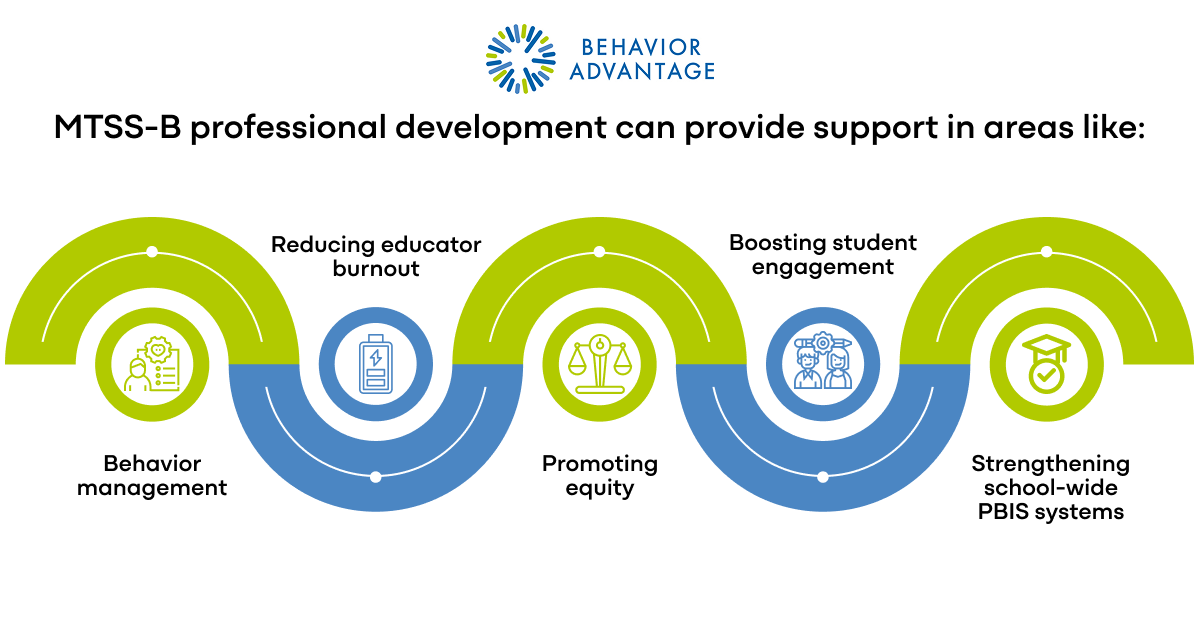
Assess What’s Already There
Schools are full of educators with diverse backgrounds and experiences — and chances are, someone on your team already has a strong foundation in MTSS. The key is not to make assumptions. Starting everyone at square one can lead to disengagement (we’ve all sat through a training we probably could’ve led ourselves).
A smart first step in your MTSS-B professional development plan is to assess where your staff are starting from. This helps ensure training is relevant, respectful of existing expertise, and targeted where it’s needed most.
You can gather this information through:
- Staff surveys
- Informal check-ins or team conversations
- Reviewing past professional development records
This simple step helps tailor your plan and avoid a one-size-fits-all approach — which saves time and builds credibility right from the start.
Differentiate the Training
Just like we differentiate instruction for students, we need to differentiate professional development for MTSS-B. A classroom teacher’s training needs will look different from those of a building leader — and different still from the district team. Roles, responsibilities, and perspectives all matter when planning effective PD.
It’s not just about the content — it’s also about how that content is delivered. Offering multiple modalities helps address barriers like time, availability, and learning preferences. And as we’ve said before, identifying those barriers is only the first step — the real impact comes from actively working around them.
Here are some practical, flexible ways to deliver MTSS-B training your staff can actually use:
- On-demand video modules for staff with tight schedules
- Role-specific sessions tailored for teachers, leaders, and support staff
- Coaching or mentoring models for deeper, job-embedded support
- Live virtual workshops that allow for interaction without travel
- In-person training with built-in collaboration time
By meeting staff where they are — in both content and format — you’re more likely to build momentum and ensure the training leads to real change.
We have developed an extensive guide about effective MTSS meetings that you can use for advice on how to best organize your staff.

Build in Implementation Opportunities
Training is only as effective as the opportunities educators have to apply it. Without a clear path from learning to doing, even the best professional development can fade into the background.
That’s why it’s essential to create intentional, ongoing opportunities for staff to implement what they’ve learned — and to reflect on it in real time. Implementation doesn’t have to mean big shifts all at once. In fact, small, focused changes are often more sustainable and powerful over time.
Here are a few ways to help staff turn training into practice:
- Action steps or takeaway tasks at the end of each session
- Model classrooms or peer observations to see strategies in action
- Coaching cycles or guided practice for deeper implementation
- Collaborative planning time to apply strategies across teams
- Celebration of small wins to build momentum and reinforce progress
When educators are supported in applying what they’ve learned — with time, space, and encouragement — MTSS-B moves from theory into everyday practice.
Create a Feedback Loop
Professional development shouldn’t be a “set it and forget it” process. To keep MTSS-B Professional Development effective and relevant, it’s essential to create a system for ongoing feedback. This allows you to make adjustments in real time — and shows your staff that their voices matter.
Regular check-ins also help surface what’s working, what’s unclear, and where more support is needed. Even small tweaks can make a big difference in staff engagement and implementation success.
Here are a few simple ways to build feedback into your Professional Development plan:
- Quick surveys after each training session
- Anonymous suggestion forms for ongoing input
- Listening sessions or focus groups by role or team
- PLC discussions focused on what’s been learned and what’s next
- Observation and coaching notes to guide next steps
Creating space for reflection and feedback not only improves the training — it builds trust. When educators see that their input shapes the process, they’re more likely to stay engaged and invested.
You’ve built the foundation, addressed the barriers, and mapped out a plan rooted in your team’s real needs. Now it’s time to move forward. Let’s look at what comes next — and how to turn your MTSS-B professional development plan into consistent, sustainable action.

Moving Forward with MTSS-B Professional Development
Professional development for MTSS-B isn’t just about training sessions — it’s about creating a system-wide culture that supports all students. To make real change, schools must prioritize staff buy-in, plan around limited time and resources, and tailor training to meet diverse needs. With a strategic approach that includes assessment, differentiation, implementation opportunities, and a feedback loop, MTSS-B professional development becomes more than a checklist — it becomes a tool for lasting impact.
Make sure to check our detailed guide about MTSS Implementation + MTSS Implementation Plan Template.
Need assistance in implementing your MTSS-B professional development plan?
The Behavior Advantage Team offers practical, affordable tools and on demand professional development tools and support that fit within your school’s limited time and resources.
Partner with us to strengthen your MTSS practices and create lasting change — Contact us today to get started.

